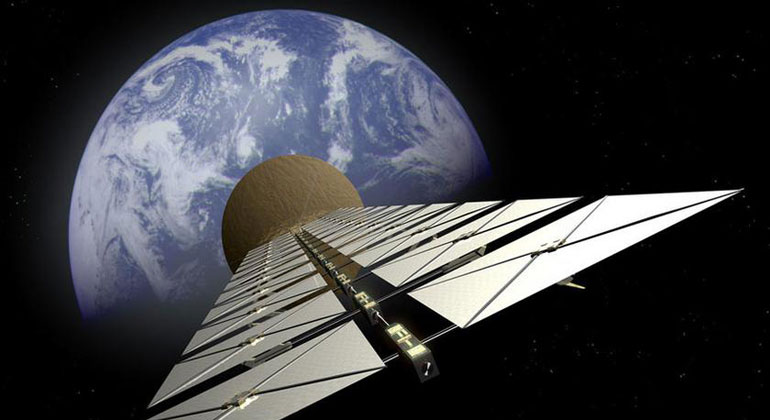Space-based solar power: seeking ideas to make it a reality
Solar energy generation has grown far cheaper and more efficient in recent years, but no matter how much technology advances, fundamental limitations will always remain: solar panels can only generate power during the daytime, and much of the sunlight is absorbed by the atmosphere during its journey to the ground. What if instead we could collect solar power up in space and beam it down to the surface? We’re seeking ideas for technologies and concepts for solar power satellites that will do precisely this.
Outside the atmosphere, sunlight is up to 11 times more intense than on European territory, and space-based solar power stations could face the Sun 24/7 to capture the maximum amount of light possible. The satellites would then beam energy down to Earth, the Moon or other planets, where a readily available energy supply will boost our ability to explore these locations.
“The potential of this concept to contribute to long-term sustainable energy is very high,” explains ESA Engineer Advenit Makaya, who is leading the hunt for ideas. “Not only would it generate clean energy, it would also be very flexible – it could be integrated into power grids on Earth, but also used for exploration missions.”
Powering rovers on the Moon or Mars may be one of the earliest applications of space-based solar power. With these requiring only a relatively small amount of energy, it could unlock lunar missions that would otherwise be impossible or extremely difficult by giving us the ability to power rovers during the lunar night. It could even provide energy to a possible future human-inhabited Moon base.
“Unlocking energy sources in space could provide access to nations to integrate space as part of their socio-economic advancement and success, and advance the exploration of space in a sustainable manner as well as use space to tackle sustainability on Earth,” comments Chiara Manfletti, responsible for policy and programme coordination at ESA.








